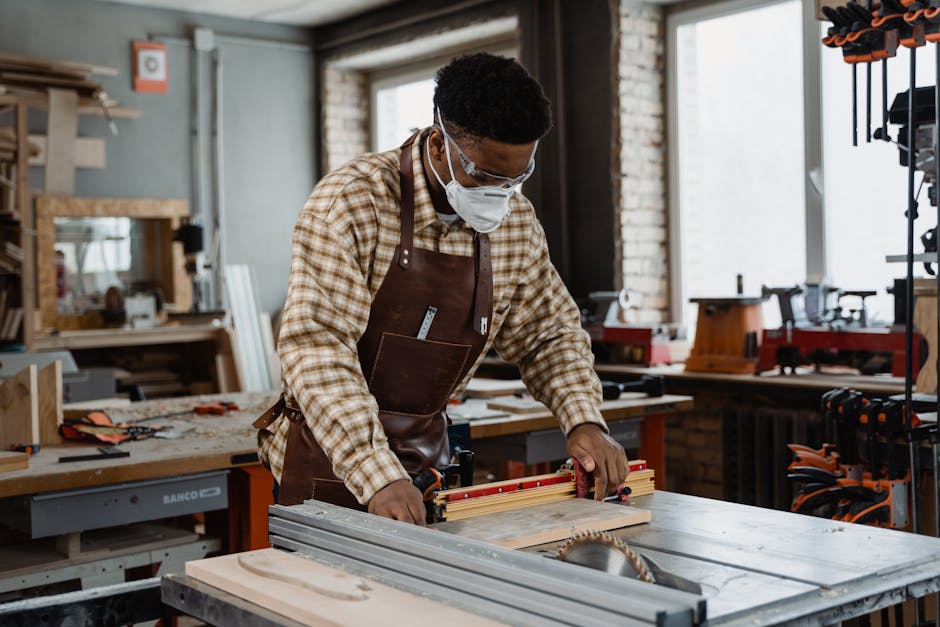hi I'm Evan from EcoPoxy today I'm
gonna show you how to create this beautiful River table using reclaimed
live-edge slabs and EcoPoxy resin let's get started I'm using one slab of
reclaimed poplar that used to be a tree in my ceo's front yard unfortunately the
tree had to be removed because of the risk of it falling during a heavy storm
but we're gonna give it new life as a river table make sure whatever wood you
use is dried and seasoned if you buy your live edge slabs from a lumber store
it should already have been
kiln-dry clean up any bark and sand off any
loose material you need to create a good clean surface for the epoxy to stick to
cleaning the surface also eliminates air bubbles during pouring and it adds to
the strength once your slabs are dry you can start to
cut them to the desired length make sure the ends and edges are square I'm using
a table saw but you can do this by miter saw track saw or even a skill saw with a
straightedge all right now it's time to start
building the mold cut the base piece and side pieces that you need I'm using
melamine but MDF or plywood will also work great for this make sure the size of the mold come at
least half an inch above the slabs just to be safe
cover the pieces of your mold with sealing tape like this tuck tape I
recommend using screws to put the mold together this will help when it comes to
removing the mold later place a bead of silicone on the inside
corners of the mold you could also tape the edges but
silicone is easier and better for creating a watertight seal
okay the mold is finished and it's time to clamp down the board's the wood would
float in the epoxy otherwise so this flattens the boards and keeps
them in place now it's really important you don't screw the slabs from below
EcoPoxy and other epoxies have a small percentage of shrinkage in their
curing process the slabs could pull apart if they can't move ensure that the
form is level and as watertight as you can make it the last thing you want is a
blowout it's always a good idea to put down a piece of poly for our garbage bag
below your mold to ensure any blowouts end up on the poly and not on your floor
the next step is to figure out how much EcoPoxy you'll need take the average
gap between the slabs multiplied by the length then multiplied by the depth to
get the amount in inches cubed my average gap was five and a half inches
so I'm going to multiply that by the length which is 50 inches and the depth
which is three inches to get my number 825 inches cubed I used Google to
convert inches cubes into liters and then I always round up to ensure I have
enough product for this table we'll be using 15 liters of liquid plastic this
is a two-to-one mixed ratio by volume which can pour up to an inch in three
quarters in a single pour mix the desired amount of resin with
exactly half of the hardener and then mix until clear now we're going to add the pigment to
this table we're using one of our metallic pigments called caviar
I want my River table to be opaque so I'm going to add about half of this 15
gram container of pigment you could also do regular pigments GloPoxy for a
glow-in-the-dark effect or even no pigment for a glass-like appearance once
the Liquid Plastic is mixed let it rest for 15 to 20 minutes this eliminates a
lot of the air bubbles now pour the Liquid Plastic making sure to get every
part of your table we want to pop any remaining air bubbles
I'm using a torch but a heat gun also works as you may have noticed this pour is a
lot thicker than the recommended inch and 3/4 but you can do thicker pores if
you have proper heat dissipation so I'm going to set up these two fans to help
dissipate some of the heat that's created from the reaction
you only need to turn on the fans when the temperature reaches around 30
degrees Celsius 86 Fahrenheit or around 6 to 8 hours after the pour make sure
you keep an eye on the temperature now we're going to let it cure for a full 72
hours ok it's been three days and now it's time to unscrew the mold remove the sides in the back gently with
either a putty knife or a crowbar you can finish the table with a belt
sander like I did or you can use a planer or even a router with a router
sled jig once flat and smooth on both sides it's time to start sanding always
start small and then slowly increase the grit for this project I sanded the wood
all the way up to 220 grit i sanded the epoxy to a 320 wet-sand removing all the
marks from the previous sandpaper I want my table to have a satin finish
you can also use our UVPoxy for a more glossy finish just like that we've turned reclaimed
wood into a beautiful one-of-a-kind table you'd be proud to display in your
living room thanks so much for watching I really hope that you enjoyed seeing
how a table like this comes together if you want to see more videos like this
one you can subscribe to our YouTube channel follow us on Instagram or visit
us at ecopoxy.com thanks again


